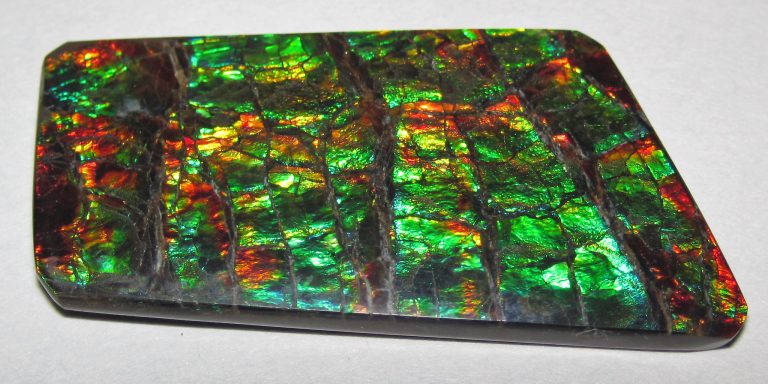In southwestern Alberta, where the vast prairies meet the peaks of the Rocky Mountains, lies the world’s most abundant supply of a rare and visually striking gem. Ammolite, or gem-quality fossilized ammonite, is found almost exclusively among the dark gray shale of the Bearpaw Formation.
The area, named for the Bear Paw Mountains in Montana, is home to a wide range of marine fossils and dinosaur remains of remarkable archeological value. The geological conditions underneath its sediments allow the formation of an iridescent material on the outer shell of invertebrate fossils, giving rise to an organic gemstone known as ammolite.
Alberta’s official gemstone, ammolite is valued for its spectacular display of colors and unique patterns. Long known to local indigenous groups, this gemstone represents the province’s rich cultural and geological diversity.
Characteristics of ammolite
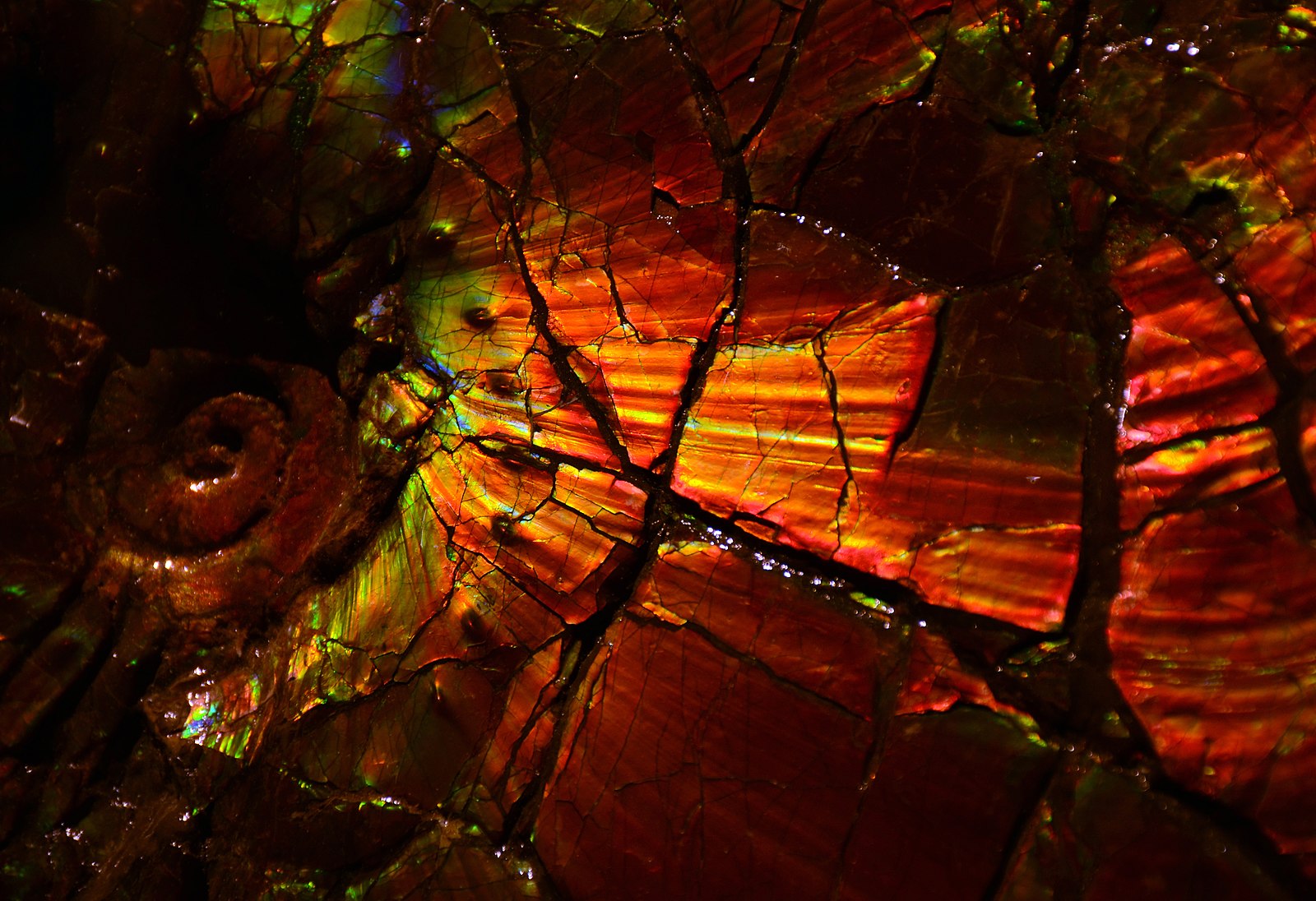
Viewed from different angles, ammolite can display all the colors of the visible spectrum, or it might simply exhibit one or two. Among its characteristic vibrant colors are red, orange, yellow, green, blue and purple – which, when combined, give rise to even more fascinating hues.
The colorful spectacle is the result of light reflection on the outer layer of fossilized mollusc shells. This layer is usually very thin – less than a millimeter – and is responsible for the different patterns and transparency of the surface.
Success
You are now signed up for our newsletter
Success
Check your email to complete sign up
Ammolite is classified according to the intensity and distribution of its colors, and the finest quality is labeled as “AAA” grade. It has a relatively low hardness on the Mohs scale – between 3.5 and 4 (out of 10) – and must be handled with care to prevent scratching or damage.
Formed on fossils
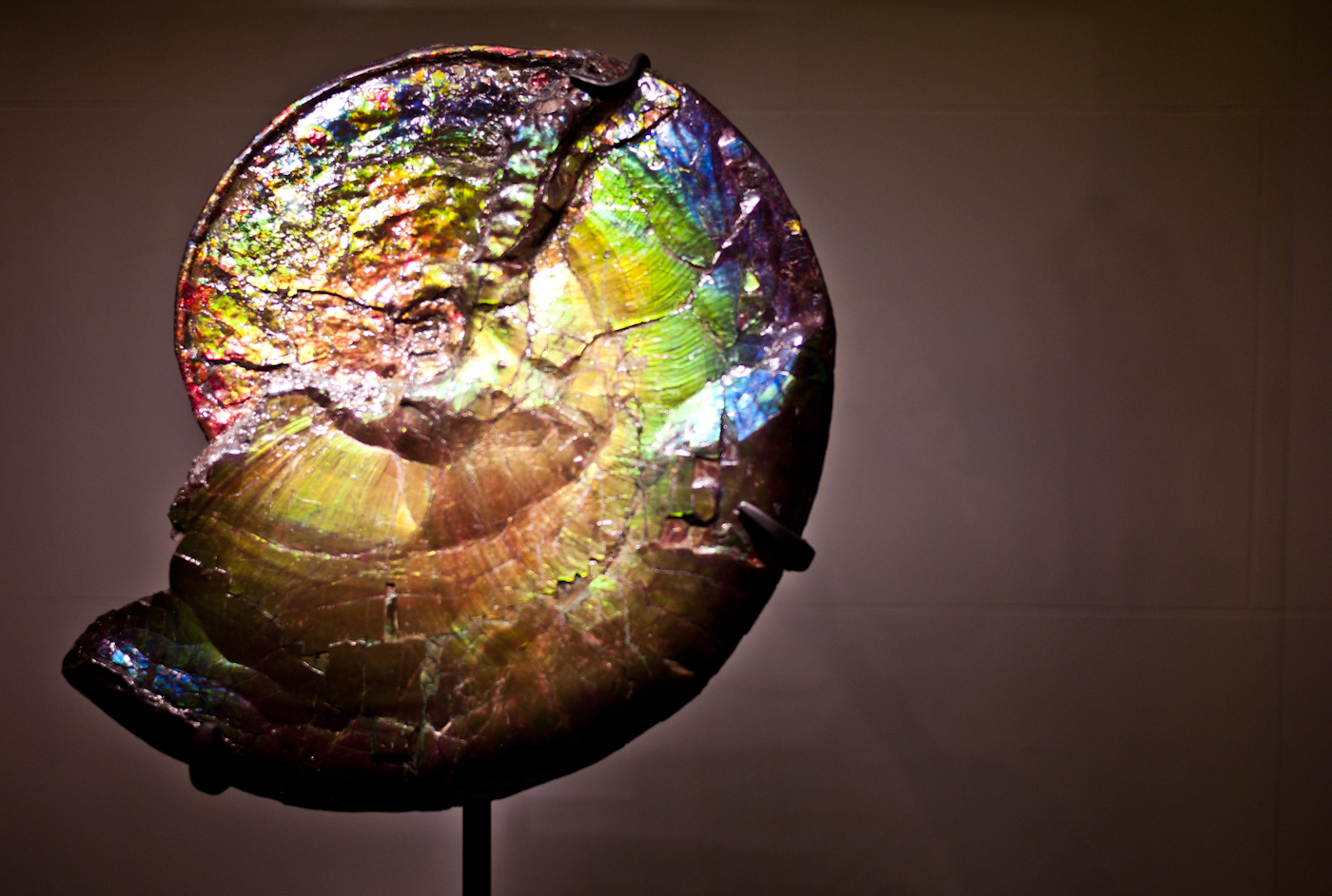
Sometimes known as “calcenite” or “corite,” ammolite is formed on the outer shell of a fossilized marine invertebrate known as ammonite. Similar to the modern Nautilus, these mollusks had tightly coiled shells and soft bodies, but they became extinct at about the same time as dinosaurs.
Ammonites used to inhabit a prehistoric inland sea known as the Western Interior Seaway that bordered the Rocky Mountains. When they died, their shells fell to the seafloor and, over time, were covered with sediments that became shale. These sediments preserved the chemical composition of the shells, allowing the formation of their distinctive iridescent outer layer.
Most of the gem-quality ammolite is found in the Bearpaw Formation, a geological deposit that covers parts of the U.S. state of Montana and the Canadian provinces of Alberta and Saskatchewan. Ammolite has also been found in other regions – such as England, Morocco and Madagascar – but the colors are usually too fine, too faint, or too irregular for it to be used in gem production.
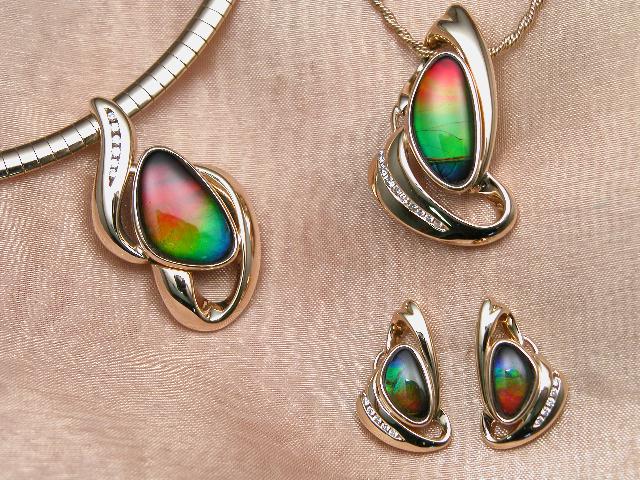
High quality ammolite produces a vivid display of tones that is visible from numerous angles and is not interrupted by any gaps. The highest-grade ammolite is mined along the St. Mary’s River in southwestern Alberta, where depth has protected the ammolite from weathering and where most of the world’s commercial production comes from.
Ammolite’s spiritual meaning – the Buffalo Stone
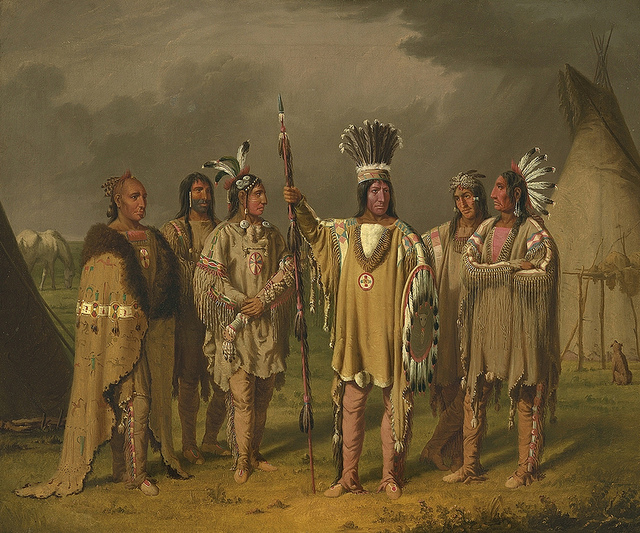
The colorful gemstone was long known to the Blackfoot people of North America, and is the subject of a spiritual legend regarding the survival of their millenary culture.
As the story goes, the tribe was running out of food during a harsh winter. Buffalo were nowhere to be found, and the leaders of the tribe began to pray to the Creator for ways to feed their people.
One day, a young woman had a dream in which a spirit told her that the Creator had heard their prayers. The spirit instructed her to set out on a journey and follow a soft melody that would guide her to a special stone. Bringing the gem back to the tribe would save her people from starvation.
The young lady told her husband about her dream, and he made arrangements for her trip. Amidst the deep silence of the snowy landscape, delicate music permeated the air. Following the sound, she walked into the woods, where she found a visually striking stone resting at the base of a cottonwood tree.
The woman took the gem and presented it to the elders. With pious hearts, the tribe performed a ceremony following the spirit’s instructions. The gem was given the name Iniskim, which means “buffalo stone.”
The next day, a herd of buffalo appeared in the tribe’s territory. The animals, sent by the divine, provided the Blackfoot people with food, clothing and shelter to survive the long winter.
From then on, ammolite became a symbol of divine assistance, and a treasured talisman for luck and prosperity.
A symbol of Alberta’s distinct heritage
In April 2022, ammolite was named the official gemstone of the Canadian province of Alberta. Along with the wild rose, the great horned owl and the Rocky Mountain bighorn sheep, ammolite is recognized as one of the emblems of the province and a representation of its diverse history, landscapes and people.
Today, ammolite is mined almost exclusively in southern Alberta by local companies, the most renowned of which is Korite International. This colorful gemstone continues to be valued by locals and admired by tourists, complementing the beauty of the enchanting land guarded by the towering Canadian Rockies.



